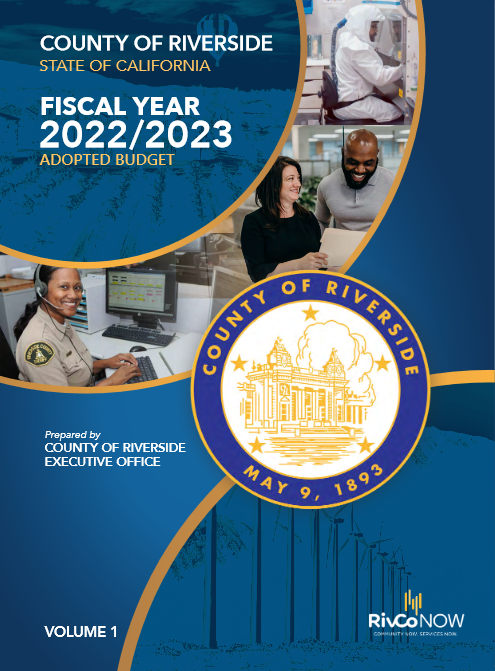County’s Financial Position
RIVERSIDE (CNS) – Riverside County government’s financial condition at the close of the current fiscal year is “stable,” with agencies out of the red but still required to exercise budgetary discipline as cost pressures mount, according to a report the Board of Supervisors received Tuesday.
“Our budgets over the last three years have lacked deficit spending, (while we) have also increased reserves,” Supervisor Chuck Washington said, saluting the work of county CEO Jeff Van Wagenen. “We have been proactive and not reactive.”
In the Executive Office’s third-quarter budget report for 2022-23, Van Wagenen wrote that the “near-term outlook appears stable” but county departments still need to prepare for “challenges … in the years to come.”
“While we continue to project increased revenues compared to the adopted budget, it should be noted that the pace of growth is slowing down significantly, while costs continue to rise to maintain the status quo, let alone increase service levels,” the CEO said.
As with the midyear report in February, the third-quarter update indicated discretionary revenue will exceed initial projections by $89 million at the end of the fiscal year, topping out at $1.102 billion, rather than the $1.013 billion originally projected.
The gains are mostly the result of higher tax receipts, as residents shell out more for goods and services, as well as greater earnings from the county’s investment pool.
Property tax receipts are expected to expand $18.2 million more than what officials estimated before, while the county will likely take in $11.1 million in additional sales and use taxes, and separately, the county’s share of statewide Proposition 172 Public Safety Sales Tax revenue is projected to be $13.3 million greater than first estimated, according to the Executive Office.
Only one member of the public requested to speak on the budget — Moreno Valley resident Roy Bleckert.
He took aim at Prop 172 spending, opining that the half-cent sales tax that’s designed to bolster public safety hasn’t had the desired effect.
“We’re paying more for less public safety,” Bleckert said. “We the people suffer. We hear from our representatives that they don’t want to debate. There should not be one vote for a budget adjustment until there’s a proper discernment as to how (Prop 172) funds are spent, so the public will be safe.”
Interest earnings in the Treasurer-Tax Collector’s investment pool, containing a range of fixed instrument products, are expected to be $45 million more than earlier estimated, officials said. The returns stem directly from the Federal Reserve Bank’s ongoing hikes to the benchmark short-term lending rate — pushing interest rates higher on the county’s investments — a process that began a year ago as part of a liquidity pullback strategy to attack 40-year high inflation.
County agencies — there are more than three dozen — continue to contend with higher cost pressures, requiring bigger outlays to deal with them, the Executive Office stated. Most of the budgetary challenges have been driven by revised or renewed collective bargaining agreements guaranteeing cost-of- living and merit pay hikes, as well as more county obligations to pay health, dental and other insurance.
Additional pressures stem from software upgrades, public safety outlays and public works.
The board on Tuesday approved $2.6 million in new General Fund appropriations to cover some near-term spending requirements.
Officials said the county reserve pool is projected to be $537 million, compared to $511 million estimated in November. The original estimate in June was $368 million.
The board approved a $7.45 billion budget for 2022-23, roughly 8% larger than the 2021-22 budget of $6.88 billion. Most of that money is comprised of non-discretionary, or programmed, budget appropriations and includes “pass-through” revenue streams from the state and federal governments.
The county received almost $500 million in 2020 Coronavirus Aid, Relief & Economic Security Act allocations and another $480 million in 2021 American Rescue Plan Act money, and Van Wagenen acknowledged last June that just under 10% of the federal infusions were applied to “budget stabilization” in 2022-23.
The funds have been used for homeless and rental assistance programs, along with other social welfare efforts, but they’ve also been appropriated for capital improvement projects.
Hearings on the 2023-24 fiscal year budget will be held June 12-13.

For More Riverside County News Visit www.zapinin.com.

